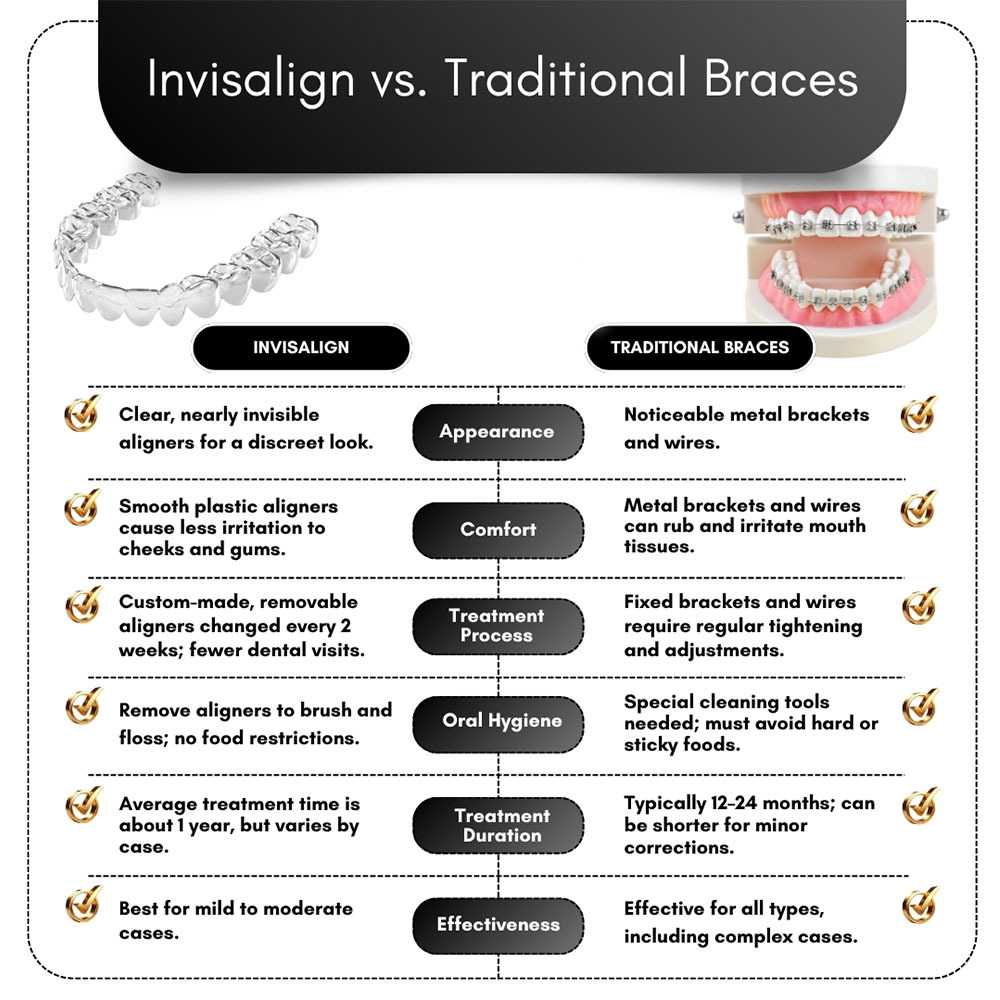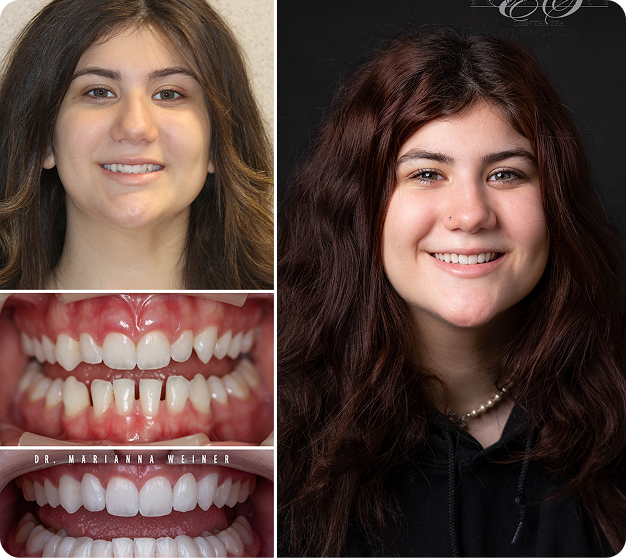See other comparisons between Invisalign and its alternatives:
What Is Invisalign?
Invisalign is a clear aligner system that can correct a comprehensive range of orthodontic issues. The clear aligners are made from medical-grade plastic. They are custom-created to place exact pressure on each tooth, gradually guiding them into the right positions. Invisalign is a discreet alternative to traditional braces, that can help with different types of bite issues. Below is a list of articles explaining how Invisalign works for each type of malocclusion:
- Invisalign for Overbite
- Invisalign for Crossbite
- Invisalign for Crowded Teeth
- Invisalign for Underbite
- Invisalign for Gap Teeth
- Invisalign for Open Bite

What Are Traditional Braces?
Traditional braces are much more visible. They have metal brackets cemented onto teeth for the duration of treatment. The metal brackets are attached to thin wires. The wires are powered by elastics, creating enough tension to move teeth into the right positions.
Traditional braces can provide precise results, correcting many orthodontic problems. Patients who need jaw widening, may also need appliances like removable palate expanders to achieve more comprehensive results.
There are numerous differences between the two systems, including how they look and operate and their impact on everyday life during treatment. It’s important to consider the pros and cons of each and to listen to our orthodontist’s advice when determining which is better suited to your needs.
The following article will give you a clearer idea of the benefits and disadvantages of Invisalign and traditional braces.

Appearance
Invisalign
- Invisalign aligners are clear and virtually invisible in the mouth.
- They are aesthetically appealing, and because they are discreet, they can help boost self-confidence during treatment.
Traditional Braces
- You can immediately see traditional braces in the mouth.
- The metal brackets and wires can look unsightly.
Comfort
Invisalign
- Aligners are made from smooth plastic without any hard or sharp edges.
- They are comfortable in the mouth and less likely to irritate lips, gums, and cheeks.
- The aligners may feel uncomfortable when you first start to wear a new set but this discomfort should settle down quickly.
Traditional Braces
- Traditional braces are more likely to cause discomfort if the metal brackets rub against the cheeks or lips.
- They are more likely to have sharp or hard edges that can cause irritation.
- Your braces may feel uncomfortable when they are first fitted and when they are adjusted or tightened. They should start to feel more comfortable again as your teeth settle down.
Treatment Process
Invisalign
- Your aligners are custom-made to fit your mouth exactly based on a 3-D digital dental impression.
- The aligners are changed every two weeks, so you discard your current set of aligners and move on to the next set in your treatment plan.
- Your aligners will not require any tightening or adjustments.
- You will only need quick dental checkups every 6 to 8 weeks.
Traditional Braces
- Traditional braces have brackets bonded permanently onto your teeth and wires and elastics that need adjusting periodically.
- They need regular checkups so we can tighten and adjust the braces as your teeth move.
Oral Hygiene
Invisalign
- The aligners are removable, so you can take them out and brush and floss your teeth normally.
- No dietary restrictions are needed as you remove the aligners for meals.
Traditional Braces
- Traditional braces can be challenging to keep clean as you must use special tools to clean around the brackets and wires after every meal and in the morning and evening.
- You must change your diet and avoid foods that could damage the brackets and wires. These include any foods that are crunchy, hard, or sticky.
Treatment Duration
Invisalign
- The average treatment time is around a year, but it can be shorter or longer, depending on the complexity of your plan.
- Minor tooth movements can be completed with as few as 5 to 7 sets of aligners.
Traditional Braces
- The average treatment time is 12 to 24 months, but can be shorter or longer depending on the complexity of your treatment plan.
- Minor tooth movements can be completed more quickly, sometimes as soon as six months.
Effectiveness
Invisalign
- Invisalign is suitable for patients with mild to moderate orthodontic cases, although it can treat some more complex issues.
- It may be less helpful for severe malocclusion or a poor bite.
Traditional Braces
- Traditional braces can effectively treat a comprehensive range of orthodontic problems.
- If complex orthodontic issues require correction, traditional braces may be more effective in delivering precise tooth movements.
Patient Experience
Daily Maintenance and Follow-Up Visits
Invisalign
- The aligners must be worn for 22 hours each day. Ideally, we would prefer you remove them only for oral care and mealtimes.
- No adjustments are needed to your aligners as each set is designed to continue moving your teeth in small increments.
- You will need regular checkups with our Brooklyn Invisalign Center provider to monitor your progress and to make any necessary changes to your treatment plan.
- If you lose your aligners, you must contact us immediately to get a replacement set.
Traditional Braces
- Traditional braces are non-removable, so they work continuously to straighten your teeth.
- You must attend regular visits so we can adjust your braces. They must be gradually tightened to continue applying the right amount of pressure on your teeth.
- You may experience broken brackets or wires during your treatment. If so, prompt orthodontic emergency care is essential to avoid delays in your treatment.
Cost
Invisalign
- Invisalign is generally more expensive than traditional braces. The price depends on the number of aligners required.
- Insurance may cover at least part of the cost of Invisalign, provided it gives oral health benefits and is not merely cosmetically oriented.
Traditional Braces
- Traditional braces are cost-effective and less expensive than Invisalign. The overall cost will depend on the complexity of problems requiring correction.
- Insurance will likely cover at least part of the cost of traditional braces that provide oral health benefits.
Suitability for Different Age Groups
Invisalign
- A popular solution for adults and older teens.
- Invisalign produces a special system for teenagers.
- Invisalign also produces a system for early orthodontic care for children aged 6 to 10.
Traditional Braces
- Traditional braces are suitable for all ages. Children, teenagers, and adults can use them.
Lifestyle Impact
Invisalign
- Invisalign has minimal impact on everyday life. It fits in with even the busiest lifestyle.
- Invisalign aligners can be easily removed for sports and occasional special events.
“ Since I met them my life become more confident ✨they are really one of the best professionals in brooklyn.100% recommended for Invisalign eligners. “

Guga Tsomaia Invisalign Patient
Traditional Braces
- Traditional braces are permanently fitted onto teeth for the duration of treatment, and lifestyle modifications are necessary to accommodate them.
- You may need a special mouthguard to fit over them while playing sports. It may be trickier to play musical instruments.
Both Invisalign and traditional braces have their merits. The main difference is that Invisalign is removable and extremely discreet, whereas traditional braces are fixed onto teeth and are much more visible.
Everyday maintenance for removable aligners can be easier as they are simpler to keep clean. However, Invisalign aligners will not suit everyone, and traditional braces can be more cost-effective.
Related Articles
The only way to determine which solution will suit you best is to schedule a consultation with our Invisalign dentist. An initial examination of your teeth and a discussion of your aims and desires for treatment will enable us to suggest the optimal treatment for your needs. If you have any questions about Invisalign or metal braces or want to book an appointment, contact Brooklyn Invisalign Center at (718) 375-3757.

